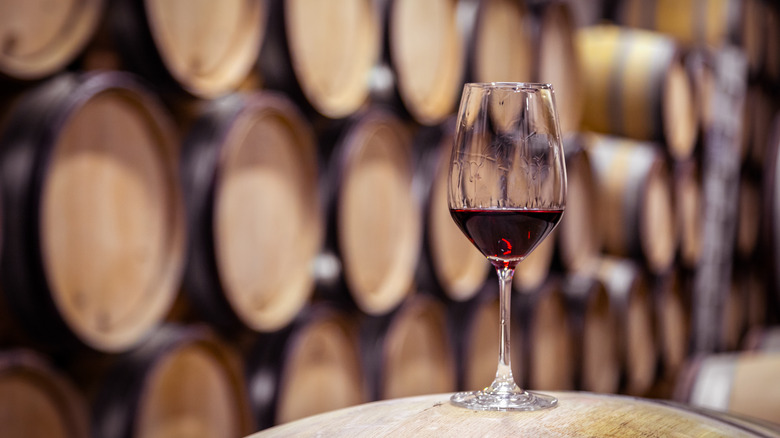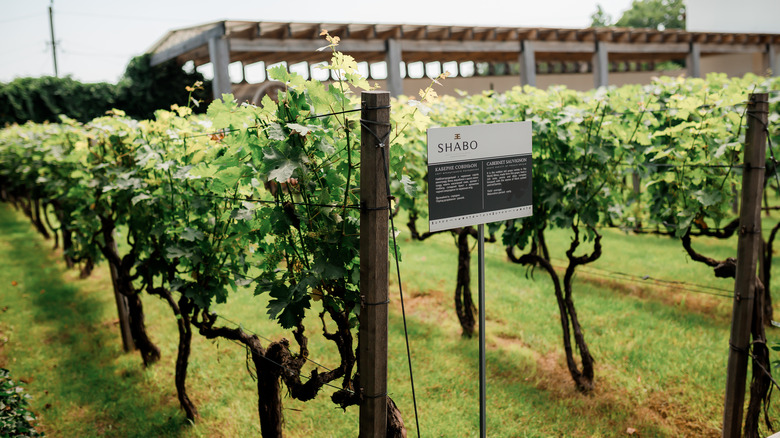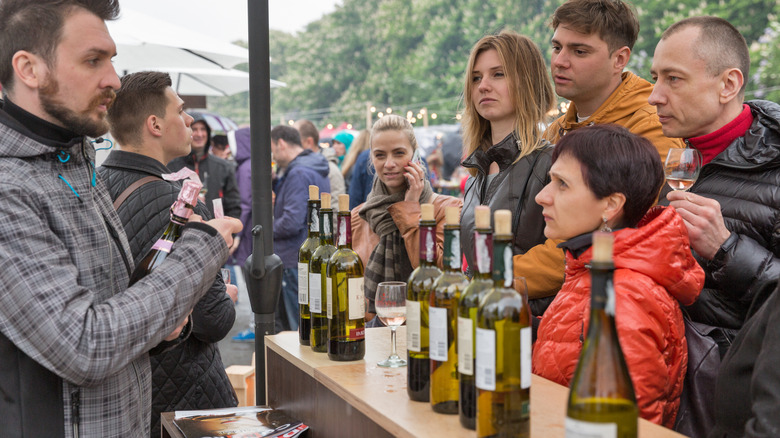Despite The Ongoing War, Ukrainian Wine Makers Are Holding Strong
As the conflict between Russia and Ukraine continues to rage on, driving up global food prices, displacing countless Ukrainian refugees, and wreaking havoc on the embattled country's food supply, one of nation's most robust edible industries is attempting to rebuild. In a short documentary produced by Reuters, some of Ukraine's top winemakers shared the process of getting back to work following a months-long halt in wine production and trade following the Russian invasion.
Winemaker Georgiy Molchanov of SliVino Village winery — whose vineyard was hit by a rocket in the early days of the conflict — is now hard at work harvesting this year's wine crop despite the adversities faced by the winery over the last six months. "You have to work, continue living and making plans for the future — and hope that rockets don't come to your house," Molchanov said.
In addition to growing and harvesting in a war zone, wineries across the nation have also faced crippling financial and trade challenges due to Russian blockades of Ukrainian ports and the blanket ban of alcohol sales across Ukraine during the first two months of the conflict. This has also led to a 20% decrease in the country's overall wine consumption.
Wine consumption in Ukraine has dropped significantly since the Russian invasion
Although lesser known than some global wine regions, the Ukrainian wine industry has a rich history dating back to 4th century B.C. (via Wines of Ukraine). During the era of the Soviet Union, Ukraine was the top wine producer in the region, and in 2019 alone over 133 million liters of wine made from 180 grape varieties were produced by the country's more than 100,000 acres of vineyards.
The onset of the conflict, which began with a Russian invasion in February, brought the thriving Ukrainian wine industry to a sudden halt, as workers and winery owners fled the country and some vineyards found themselves situated at the center of a war zone, per BBC. Workers at one such winery, the Olvio Nuvo vineyard in Southern Ukraine — which is the closest vineyard to the front line, according to owner Pavlo Magalias — reported explosions happening around them as they attempted to attend to the grapes (via Radio Free Europe).
In the earliest days of the war, many of the nation's wine producers pivoted from bottling wine to a more explosive product. According to The Buyer, some of the occupied country's winemakers began using their supplies of bottles to produce Molotov cocktails, a DIY weapon made by filling a glass container with a flammable fluid and fuse, in lieu of wine.
Some wineries pivoted to weapon making in the early days of the conflict
Wine and Spirits Ukraine CEO, Victoria Agromakova, told The Buyer in March that she didn't know anyone that currently worked at a winery because the war had caused different needs. "Now winemakers are bottling not wine, but gasoline for Molotov cocktails to protect their land from Russian troops," Agromakova said.
However, in recent months, winemakers like Tatyna Matveyeva of Koblevo (one of the nation's largest wineries, which typically produces around 15% of Ukraine's wine) have gotten back to work on what they do best — harvesting, fermenting, and bottling Ukrainian made wines (via Reuters). "This is why we make our wine, so its taste and feel can help people live on, reminding them that life is not over," Matveyeva said.
Although export blockades have cut off a major source of revenue for Koblevo, which exported to 14 countries prior to Russia's invasion, some of the nation's top wineries continue to operate in hopes that one day the world — and the millions of displaced Ukrainian citizens — will once again be able to get a taste of the nation's wines.


